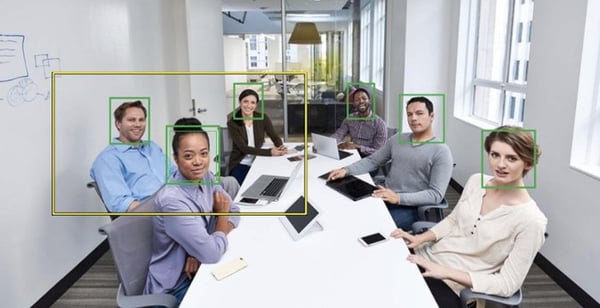How many times have you entered a conference room and walked out again because you KNOW that the meeting isn’t going to start for at least another 15 minutes, killing your day’s productivity? Maybe you saw:
- The boss looking at four remote controls with confused panic on his face.
- A colleague trying to reach the IT department while someone else is pounding on the wall yelling at the screen to come down.
- Someone muttering under the table throwing cords around.
Whatever it was, you knew that – once again – the Meeting Gods were having a good laugh.
What We Expect of State-of-the-Art Conference Rooms
Technology is supposed to make life easier. In the age of being able to shoot award-winning movies with a phone, EVERYONE needs to be able to walk into the meeting room, push a button or two, and have everything work. This is especially true given the globalization of markets and the virtualization of the workforce.
In most cases, we walk into a conference room planning to share content, make a call, or make a call to share content. We expect simple and reliable technology to be in place so that the meeting is a great experience – no matter what’s said.
What We Gain
75% of businesses that meet with video report that it improves collaboration and increases productivity across dispersed teams (Cisco). The right technologies will help simplify your meetings without sacrificing quality or security. When working with a truly up to date conference room, the technology is so reliable and intuitive that using it becomes second nature. Meetings become beneficial instead of a black hole of time and productivity.
If we look forward to – instead of dreading – a meeting, we’re more likely to be prompt for it, effective during it, and productive after it. Not only do our jobs become easier, we get back the time we used to lose trying to figure out whatever it was we were supposed to learn in the meeting.
Technology is not the only aspect to conducting an effective meeting. If you are going to pull your team away from their daily tasks for a meeting, it is important that the meeting be efficient and beneficial to everyone attending. If you’re looking for tips to conducting a more effective meeting, we have a list of 5 top tips just for you.
How to Create a State-of-the-Art Conference Room
We’ve published an article on the design of killer conference rooms. The technology you implement is a result of that design. The key to great design is the use of the room.
- What is the purpose of the room?
- How big is the room?
- What are the room lighting considerations?
- What are the audio need of the room?
- How many video screens do you need and what size?

If the room is primarily for sharing content and/or making calls, there are simple hardware-based solutions that everyone – from the newly hired millennial to the founder’s hermit cousin – can use intuitively.
Video solutions are now more affordable for all types of rooms – from small huddle rooms to executive conference rooms and large training rooms. However, there are still major differences between manufacturers when it comes to the way these solutions are installed, managed, and their usability. Understanding the purpose and design of your conference room is key to deciding the right technology to implement. Many technologies look good on paper, however successful collaboration is directly tied to the user experience – from ease of scheduling a meeting to ease of starting or joining one. When video conference rooms are designed with usability as a top priority, you will see an increase in collaboration and meeting productivity.
Are you having a hard time determining what video solution is best for your conference room? We’ve written an in-depth comparison of the two solutions we are seeing customers evaluate most:
If the room is for a variety of uses beyond sharing content and/or making calls, a more extensive – yet still simple to use configuration may be needed. For example:
- multiple microphones to accommodate multiple meeting formats
- cameras for a presenter as well as participants
- a stellar sound system
When you’re evaluating TV displays you want to consider display options (UDH, 4K, etc.), resolution, frame rate, colors, and white balance features. Displays should have High-Definition Multimedia Interface Consumer Electronics Control (HDMI-CEC) support to allow your codec to turn on the display when resuming from standby. Using displays with lower delay will increase the naturalness of communication.
For medium and larger rooms, it is recommended to include external microphones. Make sure the video conferencing solution you choose to deploy support the number of external microphones you believe you will need for the room.

Most of the video solutions we see today come with built in speakers, however for a larger room you may need some audio reinforcement, such as an AMP and additional speakers. This audio reinforcement will make for a better experience for the meeting attendees sitting in the back of the room or far from the speaker bar in your video solution.
Regardless of your needs, the professionals at LookingPoint have the skill and equipment to install the state-of-the-art conference room that will best serve your organization. We look forward to helping your group increase their productivity.




